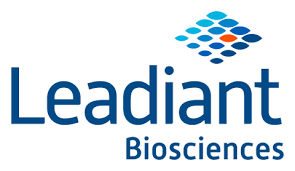预约演示
更新于:2025-12-04
Cysteamine Hydrochloride
盐酸硫乙胺
更新于:2025-12-04
概要
基本信息
权益机构- |
最高研发阶段批准上市 |
最高研发阶段(中国)- |
特殊审评孤儿药 (美国)、孤儿药 (欧盟)、孤儿药 (澳大利亚) |
登录后查看时间轴
结构/序列
分子式C2H8ClNS |
InChIKeyOGMADIBCHLQMIP-UHFFFAOYSA-N |
CAS号156-57-0 |
关联
2
项与 盐酸硫乙胺 相关的临床试验NCT04125927
Open-label, Single-arm, Multicenter Study to Assess the Safety of Cystadrops® in Pediatric Cystinosis Patients From 6 Months to Less Than 2 Years Old
Cystadrops® is currently indicated in adults and children from 2 years of age diagnosed with cystinosis with corneal crystal accumulation observed.
However administration of Cystadrops® in patients below 2 years old could be of value for these patients and prevent the crystal deposit. It is the reason why as part of the Cystadrops® pediatric investigational plan (PIP), RECORDATI Rare Diseases committed to conduct a clinical study to assess Cystadrops® safety and efficacy in the pediatric population from 6 months to less than 2 years old.
However administration of Cystadrops® in patients below 2 years old could be of value for these patients and prevent the crystal deposit. It is the reason why as part of the Cystadrops® pediatric investigational plan (PIP), RECORDATI Rare Diseases committed to conduct a clinical study to assess Cystadrops® safety and efficacy in the pediatric population from 6 months to less than 2 years old.
开始日期2020-09-01 |
申办/合作机构 |
EUCTR2007-006024-35-FR
Adaptive dose regimen of Cystadrops for cOrneal Crystal deposiTs and ocular manifestations in nephropathic cystinosis : an open label, dose-response pilot study - CYSTADROPS OCT-1 pilot study
开始日期2008-02-04 |
申办/合作机构 |
100 项与 盐酸硫乙胺 相关的临床结果
登录后查看更多信息
100 项与 盐酸硫乙胺 相关的转化医学
登录后查看更多信息
100 项与 盐酸硫乙胺 相关的专利(医药)
登录后查看更多信息
2,178
项与 盐酸硫乙胺 相关的文献(医药)2025-11-17·ACS Applied Bio Materials
Beyond the Source: Nanozyme-like Carbon Dots Derived from Cherry Tomato Mitigate Ocular Oxidative Stress
Article
Ocular tissues are subject to heightened oxidative stress due to prolonged environmental exposure and intrinsic metabolic radical generation. Although fruits such as cherry tomatoes are rich in natural antioxidants, their poor bioavailability and low stability limit clinical utility. To address this, we developed amphiphilic carbon dots (TM-CDs) via a microwave-assisted synthesis using fresh cherry tomato juice as the single source. The resulting TM-CDs exhibit bright fluorescence, high stability, excellent biocompatibility, multienzyme-like activity, and potent free radical scavenging capacity. Notably, TM-CDs showed significant ocular accumulation in zebrafish, enabling efficient scavenging of diverse ROS species and the mitigation of oxidative damage. Experimental results indicated that TM-CDs not only ameliorated ocular dysplasia in zebrafish induced by cysteamine hydrochloride but also maintained ocular redox homeostasis by upregulating superoxide dismutase (SOD) activity and glutathione (GSH) content, while reducing malondialdehyde (MDA) content. Consequently, the visual behavior of zebrafish, such as the mirror-biting duration, returns to normal. This coordinated multimechanistic recovery highlights the potential of biomass-derived carbon dots as a next-generation nanotherapeutic strategy for oxidative ocular disorders.
2025-11-01·Ophthalmology and Therapy
Cystadrops® Eye Drops for the Management of Ocular Cystinosis in Patients Aged 6 Months to < 2 Years
Article
作者: Bremond-Gignac, Dominique ; Hogan, Julien ; Casteels, Ingele ; Biswas, Susmito ; Iarossi, Giancarlo
INTRODUCTION:
Cystinosis is a multisystemic disease manifesting in the eyes initially as asymptomatic corneal cystine crystals and later with photophobia and serious visual impairment. Systemic effects of cystinosis arise from multiple cellular dysfunctions, causing early presymptomatic effects and progressive complications. Corneal crystals are observed across all layers of the cornea from infancy, and crystal accumulation during childhood is rapid. Early treatment is imperative, but in Europe, at the time of this study, no topical therapy was licensed for patients < 2 years of age.
METHODS:
This study was a paediatric investigation plan approved by the European Medicines Agency to assess the safety profile and efficacy of Cystadrops® (cysteamine hydrochloride 0.55%) over a 90-day period in patients aged 6 to < 24 months. Five patients were monitored for adverse events throughout the study. Corneal crystal score, photophobia, and best corrected visual acuity were assessed in each patient at day 1 and day 90, where possible. Compliance to Cystadrops® treatment was recorded.
RESULTS:
All primary endpoints were met. Any adverse events were mild and did not prevent treatment continuation. Corneal cystine crystal and photophobia scores declined or remained constant in all patients at a stage in life when an increase might be expected.
CONCLUSION:
Although the rarity of the disease renders large studies on infants impracticable, there is no indication that the safety and efficacy profile of Cystadrops® differs in patients above or below 2 years of age. The authors recommend treatment initiation as soon as corneal crystals are apparent.
CLINICAL TRIAL REGISTRY:
Clinical Trials No: 2018-002984-24.
2025-10-01·Animal Bioscience
Effects of varying levels of coated cysteamine hydrochloride in diet on growth performance and carcass quality of steers
Article
作者: Shimul, Alimul Islam ; Traithilen, Unchan ; Waramit, Naroon ; Mamun, Abdullah Al ; Helali, Md Maksudul Haque ; Meenongyai, Watcharawit ; Phongkaew, Piyamas ; Khejornsart, Pichad ; Wongpanit, Kannika
Objective: This study aimed to evaluate the effects of different levels of coated cysteamine HCl (CSH) supplementation on growth performance, carcass traits, and meat quality in Charolais crossbred cattle.Methods: Twenty-four Charolais crossbred steers, aged 24–30 months with an initial body weight of 418±31 kg, were assigned to three dietary treatments: 0% (control), 0.5%, or 1.0% CSH in concentrate. The steers were fed the experimental diets for 200 days.Results: Increased CSH levels in concentrate diets led to significant increases (p<0.05) in body weight, hot carcass weight, cold carcass weight, and dressing percentage. CSH supplementation decreased shear force values and cooking loss (p<0.05). Meat lightness was significantly greater in the 1.0% CSH-supplemented group (p<0.05). With increasing CSH levels, the proportion of high-value cuts, such as rib set and T-bone, increased (p<0.05), while the proportion of lower-value cuts, including macreuse, shank, and tendons, decreased (p<0.05). Non-carcass weights, including the feet, head, digestive tract, and scraps, were significantly higher in the 1.0% CSH-supplemented diet (p<0.05). The meat’s chemical composition did not differ significantly among the treatment groups (p>0.05). Muscle fiber diameter was significantly larger in the 1.0% CSH-supplemented group (p<0.05). Monounsaturated fatty acids increased (p<0.05) with higher CSH levels, whereas polyunsaturated and saturated fatty acids exhibited a significant decrease (p<0.05).Conclusion: Dietary supplementation with CSH enhances growth rate, carcass traits, and meat quality in steers. An inclusion level of 1.0% CSH in concentrate is the optimum feeding dosage, demonstrating its potential as an effective feed additive for enhancing beef production efficiency.
6
项与 盐酸硫乙胺 相关的新闻(医药)2025-10-09
近日,在上海交通大学医学院附属瑞金医院(以下简称“上海瑞金医院”)眼科主任医师沈玺、副主任医师张琼,中山大学中山眼科中心海南眼科医院眼科主任医师曾朝霞,上海交通大学医学院附属瑞金医院海南医院(海南博鳌研究型医院)(以下简称“瑞金海南医院”)眼科主治医师王旭以及儿科医护团队的悉心诊疗下,患有胱氨酸贮积症的5岁患儿小宝成功接受Cystadrops®3.8mg/mL滴眼液(以下简称“Cystadrops”)治疗,成为国内首位接受该创新药物治疗的患者。
Cystadrops的顺利落地,为我国胱氨酸贮积症这一罕见病群体带来了全新的治疗希望。
医生查房
胱氨酸贮积症:多器官受累的罕见遗传病
有一种罕见的疾病,就像身体里悄悄藏了个“小恶魔”,它不会一下子让人倒下,却会慢慢偷走健康——它就是胱氨酸贮积症。目前,咱们还没有办法彻底赶走这个“小恶魔”,而且它还会通过家族遗传悄悄传给孩子,就像藏在基因里的“小密码”,只有当爸爸妈妈都携带这个特殊密码时,孩子才可能被它盯上。
那这个“小恶魔”是怎么搞破坏的呢?原来我们身体里有个叫“溶酶体”的“垃圾处理站”,专门负责清理用不上的营养物质,比如“胱氨酸”。而“CTNS基因”就是给这个处理站配的“搬运工”——它会造出一种叫“L-胱氨酸转运蛋白”的“小工人”,把胱氨酸及时运出溶酶体。
可一旦这个基因出了错,“小工人”就会消失,胱氨酸没了“小工人”搬运,就会在溶酶体里越堆越多,慢慢变成无数肉眼看不见的“微小晶体”,像小沙子一样在身体里到处跑。
这些“小晶体”可不老实,会一点点“啃咬”身体的器官,最先遭殃的就是肾脏和眼睛。肾脏本来是我们身体的“血液清洁工”,每天勤勤恳恳过滤血液里的废物,可一旦被“小晶体”缠上,就像过滤器被沙子堵满,慢慢没法正常工作;眼睛就更委屈了,“小晶体”会悄悄沉积在角膜上,就像给眼睛蒙了一层磨砂玻璃,看东西会越来越模糊,严重时甚至会完全看不见。
不光是肾和眼睛,甲状腺、肌肉、肝脏、胰腺这些器官,还有负责思考的大脑,都可能被“小晶体”找上门。要是一直没找到有效的办法拦住这些“小晶体”,病情只会越拖越重:肾脏可能会彻底“罢工”,变成终末期肾衰竭;眼睛可能会彻底失去光明;更让人揪心的是,患者的寿命也会因此大大缩短,本该漫长的人生,可能会被这个“小恶魔”悄悄按下快进键。
根据症状出现年龄及肾脏受累严重程度,胱氨酸贮积症这种罕见病可分为三种亚型:
01
婴儿型(肾病型):最为严重且常见的类型,肾脏损害突出;
02
青少年型:以蛋白尿为主要表现,肾小管病变较轻或无明显病变,病情进展较慢,但仍存在发展为肾衰竭的风险;
03
眼病型:主要累及眼部,对其他器官影响较小。该亚型起病较晚,以畏光为典型症状,通过裂隙灯检查可观察到明显的角膜胱氨酸结晶,几乎无肾脏及其他器官受损表现。值得注意的是,肾病型患者也常合并角膜胱氨酸沉积,导致眼部损伤。
目前治疗手段有限,多数眼部受损的胱氨酸贮积症患者长期只能依赖对症处理,难以从病因上解决胱氨酸积聚问题,生活质量受到严重影响。
创新药Cystadrops:打破“有药无门”,带来病因治疗新路径
Cystadrops已先后获得欧洲药品管理局(EMA)、美国食品药品监督管理局(FDA)批准,适用于治疗成人及2岁以上儿童胱氨酸贮积症患者的角膜胱氨酸晶体沉积。
Cystadrops
作为一种胱氨酸消耗剂,Cystadrops可深入角膜内部,有效分解并清除角膜内的胱氨酸晶体沉积,从源头上缓解角膜病变、减轻畏光症状,同时延缓视力损害进展。
如今,这一全球前沿的罕见病创新药实现国内首例可及,不仅打破了长期以来“有药无门”的被动局面,更为广大合并角膜胱氨酸沉积的胱氨酸贮积症患者提供了及时的病因治疗新路径。
尤其对于尚未出现肾脏受累,却饱受眼部症状困扰的患者,早期使用Cystadrops能够有效控制角膜晶体沉积,延缓病情进展,改善生活质量,避免因视力障碍引发长期心理压力与社会适应问题。
乐城“先行先试”赋能:药品可及+带离使用,便利患者治疗
目前,Cystadrops尚未在国内上市。依托“先行先试”政策,瑞金海南医院率先实现了该药物的临床可及。
有需求的患者可前往上海瑞金医院/瑞金海南医院/中山大学中山眼科中心海南眼科医院就诊,经医生评估符合用药指征后,在乐城先行区内瑞金海南医院接受Cystadrops治疗。
此外,根据《海南自由贸易港博鳌乐城国际医疗旅游先行区临床急需进口药品医疗器械带离使用管理办法》,患者离院时,医生会根据其继续使用该特许药品的实际需求,为患者开具仅供自用的合理剂量Cystadrops,方便患者带离医院使用。这一举措不仅减少了患者的复诊频次,降低了交通成本,更为患者的长期疾病管理提供了极大便利。
Cystadrops
期待Cystadrops在瑞金海南医院实现可及后,能帮助更多胱氨酸贮积症患者重拾“光明”日常,为他们的家庭点亮希望之光。
门诊信息
-上海瑞金医院-
眼科
沈玺主任医师
出诊时间:周一上午、周四下午
张琼副主任医师
出诊时间:周二下午、周三上午
-中山大学中山眼科中心海南眼科医院-
眼科
曾朝霞主任医师
出诊时间:周二上午、周三下午
-瑞金海南医院-
眼科
王旭主治医师
出诊时间:周一下午、周二下午、周三下午
瑞金海南医院信息
总机:0898-62621907
特许药械咨询电话:0898-62629196
地址:海南省琼海市中原镇康祥路41号、海南省琼海市博鳌乐城先行区瑞金路197号
“乐”享世界医疗,“城”就健康梦想
更多相关信息
请关注“乐城发布”公众号
咨询电话:4000-118-118
来源:瑞金海南医院
审核:何颖
编辑:林春茹
2025-04-28
Vertex Pharmaceuticals, Amgen and Jazz Pharmaceuticals are among companies that received a positive opinion from European regulators for drugs that are already in the US market.
The European Medicines Agency’s human medicines committee (CHMP) said on Friday that it recommended the European Commission to give the go-ahead for six new medicines and 10 label expansions.
Among the six new medicines was Vertex’s cystic fibrosis oral therapy called Alyftrek, which was
approved
by the FDA last December for the same indication. Amgen similarly got a CHMP nod for Tepezza in moderate to severe Thyroid Eye Disease. Tepezza was
approved
by the FDA for that condition in January 2020. Jazz also secured a positive opinion for its bile duct cancer antibody Ziihera, which was
approved by the FDA
in November last year.
On Friday, the committee said it would
re-examine
its earlier decision to reject Eli Lilly’s Alzheimer’s drug Kisunla.
It also
recommends
PTC Therapeutics’ drug, dubbed Sephience, to be used to treat hyperphenylalaninemia in patients with the metabolic disease phenylketonuria. The other CHMP medicine recommendations are for Italfarmaco’s therapy Duvyzat for Duchenne muscular dystrophy and Purpose Pharma’s Attrogy for ATTR amyloidosis.
As for the 10 label expansions, the committee recommended extending two of Bayer’s drugs, including a new dose of Adempas, which is approved for pulmonary arterial hypertension, as well as extending the label for the hemophilia A drug called Jivi for children aged seven and above.
Other label recommendations:
The regulators also recommended the EC approve nine new biosimilar products, eight of which were biosimilars to Amgen’s denosumab, which is a treatment for rare bone disease.
上市批准
2025-03-26
·梅斯医学
3岁的男孩豆豆(化名)从1岁起就成了“水桶娃”——每天狂喝6升水,尿布两小时就湿透,半夜哭闹要喝水,家人以为他“天生爱喝水”。可随后他接连骨折三次:翻身压到手臂骨折、学走路崴脚骨折,甚至拍后背哄睡都能拍断肋骨!X光片显示他的骨头像“被虫蛀空的朽木”,骨密度比80岁老人还低。
眼科医生用裂隙灯检查时,发现豆豆的角膜上布满“星尘”般的胱氨酸结晶,肾脏B超显示双肾弥漫性钙化,基因检测揪出罪魁祸首——CTNS基因突变,确诊为胱氨酸贮积症!一种因细胞“垃圾处理站”故障,胱氨酸结晶“填满”全身器官的罕见遗传病!
1
常染色体隐性遗传病
胱氨酸贮积症是一种常染色体隐性遗传病,是由编码溶酶体膜上的胱氨酸转运蛋白(site-directed mutagenesis)的CTNS基因突变引起,当该基因发生突变时,溶酶体中的胱氨酸便无法被正常转运到细胞质,从而在全身各处的细胞溶酶体内异常蓄积导致发病。
2
临床表现及分型
胱氨酸贮积症分为婴儿型(肾病型)、迟发型(青少年型)和成人型(良性或眼型)。婴儿型为最常见且最严重,表现为蛋白尿、肾功能恶化和终末期肾病。肾脏病理表现包括足细胞脱落、胱氨酸结晶等。
肾外器官也受累,眼部可见角膜结晶,导致视力丧失。营养不良和矿物质代谢紊乱可能导致骨病、肌肉萎缩和生长不良,身材矮小是慢性肾病患者的11倍。
内分泌问题包括甲状腺功能减退、无精子症(男性)和青春期延迟(女性)。未经治疗者,20岁后可能出现神经系统症状,如行走和吞咽困难、智力减退等。
3
诊断
胱氨酸贮积症的早期诊断对改善预后至关重要,未经治疗会导致全身脏器受累,预后极差。外周血白细胞中胱氨酸水平升高是确诊的金标准。裂隙灯检查可用于1岁以上儿童的角膜结晶诊断,而反射共焦显微技术(RCM)为年幼患者提供了快速、无痛的检测手段。
近年来,新的筛查和诊断方法不断涌现。智能手机结合镜面反射可用于初步筛查角膜胱氨酸晶体,适用于基层诊所。皮内反射共聚焦显微镜和谱域光学相干断层扫描(SD-OCT)可以定量检测皮肤内胱氨酸结晶,并评估视网膜病变。角膜晶体评分可通过光密度测量直观了解角膜受累程度。
对于高危妊娠,CTNS基因的分子分析可用于产前筛查,出生后通过DNA检测(如全外显子组测序或下一代测序)进行新生儿筛查,是最有效的二级预防措施。
4
治疗
胱氨酸贮积症的治疗包括以下几个方面:
一般治疗:包括高热量饮食、维持水电解质平衡等基础治疗。内分泌系统受累可使用激素替代治疗。终末期肾病患者可选择肾透析或肾移植。年轻男性可通过冷冻精子或睾丸精子提取手术保持生育机会。
胱氨酸消耗疗法:半胱胺是唯一靶向治疗药物,常用速释酒石酸半胱胺,但因不良反应和给药频繁影响患者依从性,缓释剂型改善了这一问题,但可能导致纤维化结肠病。角膜结晶患者可使用半胱胺滴眼液,如Cystadrops或缓释半胱胺微球滴眼剂。血浆半胱胺或胱氨酸含量的监测可减少中毒风险。
其他疗法:由于半胱胺对已出现的范可尼综合征、无精症和角膜结晶无效,研究提供了新的治疗方向。金雀异黄素和木犀草素可降低胱氨酸浓度并改善自噬。比卡鲁胺与半胱胺联合使用可纠正近端肾小管损伤。依维莫司等mTOC1通路抑制剂、IL-1受体拮抗剂等也在探索中。基因编辑技术和自体干/祖细胞移植在小鼠模型中已验证有效,可能为患者提供长效治疗。
饮食疗法:通过补充赖氨酸或精氨酸,抑制肾脏巨蛋白途径,已在小鼠模型中证实有效,提供了新的饮食治疗选择。
这些治疗方法的安全性和有效性正在不断验证,并为胱氨酸贮积症患者提供了多种潜在治疗途径。
参考资料:
[1]寇文韬,李燕.胱氨酸贮积症发病机制及诊疗新进展[J].疑难病杂志,2025,24(03):376-380.
[2]李晓侨,巩纯秀.胱氨酸贮积症诊疗进展[J].临床儿科杂志,2020,38(02):156-160.
[3] Kerem E.Elx-02:an investigational read-through agent for the treatment of nonsense mutation-related genetic disease[J].ExpertOpiniononInvestigational Drugs,2020,29(12):1347-1354.D0l:10.1080/13543784.2020.1828862.
来源 | 梅斯医学
编辑 | wanny
神经系统罕见病交流群
↓点击下方“阅读原文”,下载梅斯医学APP吧!
100 项与 盐酸硫乙胺 相关的药物交易
登录后查看更多信息
研发状态
批准上市
10 条最早获批的记录, 后查看更多信息
登录
| 适应症 | 国家/地区 | 公司 | 日期 |
|---|---|---|---|
| 胱氨酸贮积症 | 美国 | 2012-10-02 | |
| 胃肠道间质瘤 | 美国 | 2012-10-02 |
未上市
10 条进展最快的记录, 后查看更多信息
登录
| 适应症 | 最高研发状态 | 国家/地区 | 公司 | 日期 |
|---|---|---|---|---|
| 角膜疾病 | 申请上市 | 欧盟 | - |
登录后查看更多信息
临床结果
临床结果
适应症
分期
评价
查看全部结果
| 研究 | 分期 | 人群特征 | 评价人数 | 分组 | 结果 | 评价 | 发布日期 |
|---|
No Data | |||||||
登录后查看更多信息
转化医学
使用我们的转化医学数据加速您的研究。
登录
或

药物交易
使用我们的药物交易数据加速您的研究。
登录
或

核心专利
使用我们的核心专利数据促进您的研究。
登录
或

临床分析
紧跟全球注册中心的最新临床试验。
登录
或

批准
利用最新的监管批准信息加速您的研究。
登录
或

特殊审评
只需点击几下即可了解关键药物信息。
登录
或

生物医药百科问答
全新生物医药AI Agent 覆盖科研全链路,让突破性发现快人一步
立即开始免费试用!
智慧芽新药情报库是智慧芽专为生命科学人士构建的基于AI的创新药情报平台,助您全方位提升您的研发与决策效率。
立即开始数据试用!
智慧芽新药库数据也通过智慧芽数据服务平台,以API或者数据包形式对外开放,助您更加充分利用智慧芽新药情报信息。
生物序列数据库
生物药研发创新
免费使用
化学结构数据库
小分子化药研发创新
免费使用



